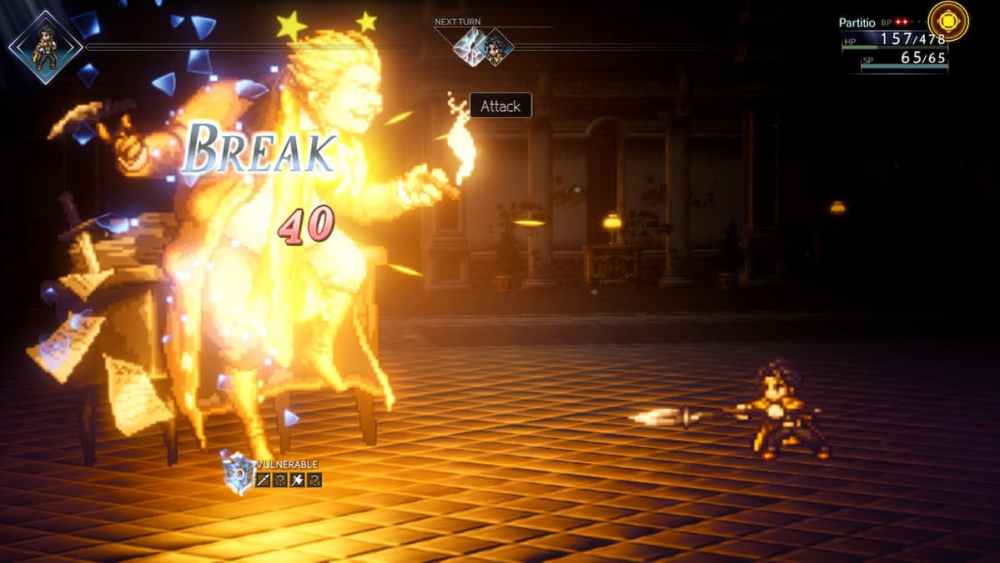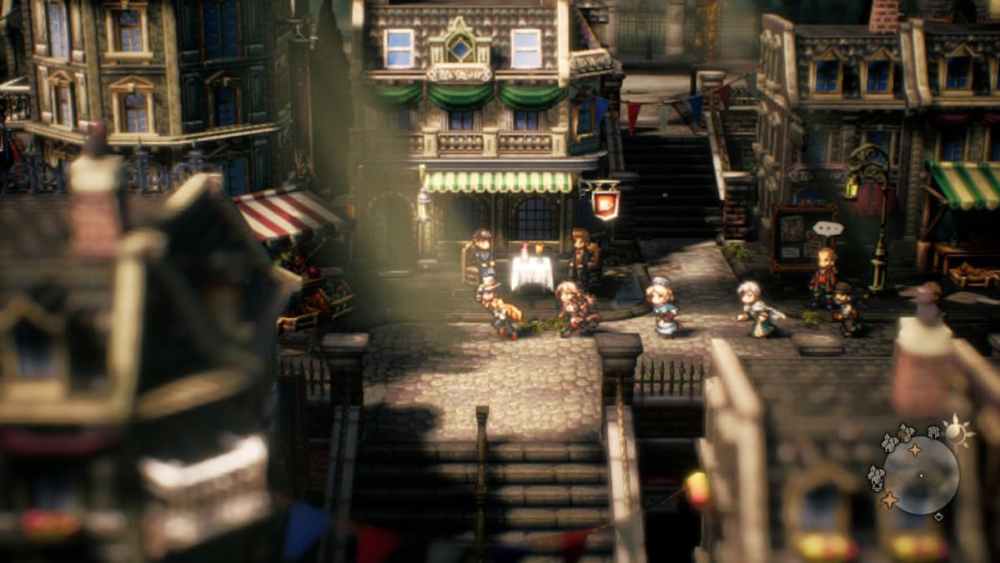Octopath Traveler II on Nintendo Switch
In 2018, the Nintendo Switch was gifted a stellar timed exclusive in the form of Square Enix’s Octopath Traveler. It boasted a rock-solid battle system, gorgeous visuals, a lilting soundtrack, and countless hours worth of content. It was, and remains to this day, one of my favorite games on the hybrid console.
Having spent a significant amount of time with its successor brings a lot of emotions, proving to be a distillation of everything that made the first title good, and yet, still falling short in many of the same ways. Trying to unpack how to feel about that is ultimately a question of what you really want from a sequel, and it’s one that I’m still pondering the answer to.
First, let’s hash out the fundamentals. As alluded to in our preview, Octopath Traveler II is a self-contained follow-up to the runaway success JRPG from yesteryear. You select one of eight protagonists, travel the continents and assemble the rest of the team, working together in turn-based battles as each character continues their own tale, chapter by chapter.
These characters are, for the most part, just as solid as the heroes from the original. The animalistic hunter Ochette is particularly endearing, and the cleric Temenos’ whimsical approach to theology is well-written. Of course, some of their motivations are clearly more compelling than others; the grizzled scholar Osvald is seeking revenge for the murder of his family, while the dancer Agnea is in pursuit of fame. Why Osvald would humor her by joining forces is far beyond me (five years in prison made him hanker for a bit of glitz?), but we will circle back to story interconnectedness later on.
Just like Octopath Traveler I — for better or worse, we will be referring to that game a lot — every character’s checkpoints are dotted around the map, which makes sense from a gameplay front while rendering the narrative flow somewhat inconsistent, especially if it’s been a while since you explored a particular hero’s progression. All eight stories are satisfying in their own way once you overcome this hurdle, though they do tend to dip into the well of double-crosses a bit too often. To wit; you will experience a lot of “curse your sudden but inevitable betrayal” moments.
The battle system revolves around two major concepts; enemy weaknesses and Boost Points (BP). Each of the protagonists comes equipped with either one or two different weapons, as well as a range of elemental abilities. Should you hit an enemy with an attack it is weak to, its Shield Points will reduce by one. When that value reaches zero, you will Break the foe, leaving it unable to act on the next turn and rendering all of your attacks critical for that duration of time.

Trying to guess what an enemy might be weak to is part of the fun, and once you know what they dislike, you can take advantage of those Boost Points. Every turn, you will add one more BP to your characters (with a maximum of five). Using those BP allows you to unleash multiple weapon strikes in a row, up to four at a time. This way, you can hack through Shield Points at a faster clip, though it takes an extra turn before your BP will begin stocking again after use.
New to the formula are Latent Powers; a special ability unique to each character tied to a gauge that fills upon receiving damage, or Breaking foes. The thief Throné receives another action in the same turn, while the warrior Hikari temporarily gains access to a fresh range of powerful attacks, and so on.
These serve as a welcome addition for the most part, however there is a disparate gap in their value that quickly becomes apparent. Temenos can exploit a weakness with any weapon type, whereas Agnea is able to attack all targets with her next blow. Considering she can now dish out the overpowered Ruinous Kick to multiple enemies — which naturally Breaks defenses anyway — she typically leaves the clergyman in the dust.
The combat system is complex and nuanced, with opportunities to add a secondary class to each character and other such wrinkles, and mastering it is a satisfying, engrossing process. This is especially true the further you progress in the game, where powerful bosses will test your gray matter with their attack patterns.
It’s all presented in the HD-2D visuals that remain bewitching to this day, having attained a level of near perfection. Octopath Traveler I had an over-reliance on focus pulls and a native shadow bordering aesthetic that made environments feel somewhat limited in their scope, an issue which has been overcome in the years since. The suitably immersive soundtrack, on the other hand, is equally up to the task, with a capability to still surprise: I did not expect to hear an electric guitar and saxophone duet in Partitio’s theme, but once it kicked in, I yee-hawed my dang heart out.
The animations are more fleshed out and fluid, and it is downright invigorating to see a boss character blown up into a hulking, menacing threat once you’ve engaged with them in mortal combat. If you want an example of what sprite work should look like, it is very much this, plain and simple.
The surrounding locations are vibrant and fascinating, and some are even quite breathtaking. The layout of New Delsta makes it feel as it should; the glamorous big city, whose thin veneer of opulence belies a seedy underbelly of poverty and crime.

There are also a lot of lovely little details sprinkled throughout. When one character Breaks an enemy, the next one to act will thank them, or express concern after seeing a comrade sustain large amounts of damage. Selecting a fully BP-charged technique will cause the camera to swoop across the battlefield in a dynamic manner as it’s unleashed. This game has such a distinct personality to it, and it will quickly work its way into your heart.
The look and feel of Octopath was never really the problem, though. The biggest question is no doubt whether the protagonists play any role in each other’s tales, and the unfortunate answer is no, they do not. As the heroes commence their major storyline arcs, cut scenes will be presented as if they had been travelling solo the whole time. I felt like it was Octopath Traveler’s biggest weakness back in 2018, and it’s back to estrange me once again.
